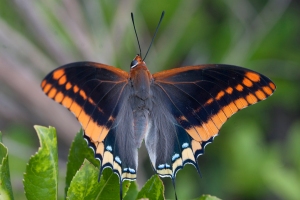Climate debt; is European wildlife living in its prime habitat?
A recent paper published by Nature Climate Change points out the relation between climate change and range variations in several species of birds and butterflies.
It was already known that climate change was affecting distribution parameters in many species of wildlife. This is study is the first attempt to quantify these chances in wildlife’s range and results have been surprising. The study have been made calculating the habitat average temperature for a number of species of birds and butterflies and the average temperature for every community (betweetn 1990-2010), which is named CTI (Community Temperature Index). By studding CTI values of over 10.000 wildlife areas, from Scandinavia to Mediterranean coast, it is clear that CTI index has steadily increased. Thus investigators have realised that bird communities would moved an average of 37 km North while butterflies communities do so 114 km North. Thus nowadays we can find species of birds and butterflies similar to those we found twenty years ago in Southern areas.

By reeding the paragraph above one can assume that both birds and butterflies are doing well against climate chance challenge. Unfortunately this far away to be truth. While birds and butterflies have moved North their populations for 37kms and 114kms during the last twenty years, the average temperatures in Europe have moved North 249 km, far more then wildlife. Thus there is a difference of 212 km for birds and 135 km for butterflies. This index shows how bird and butterfly species are not moving fast enough North to occupy their best ecological ambient and, thus, there is an important percentage of wildlife living in sub-prime areas. This situation can heavily affect to the whole ecosystem not only because of the effects today but also because of that trend will increase in future years.
This investigation has been made in Finland, Sweden, United Kingdom, the Netherlands, Check Republic, France and Catalonia. CTI increase has been detected in all countries but it is more accused in Northern countries where climate chance effects would be more deep than in Southern ones.
According to this investigation both butterflies and birds are moving North their ranges but unfortunately they are not moving fast enough and thus are living in sub-prime climate areas. This situation afford a «climate debt», a new concept regarding the distance between their range and the optimal climate conditions where they are adapted to live in.
This study assume the link between climate change and nature as well as point how difficult would be the management of our ecosystems in next decades.

